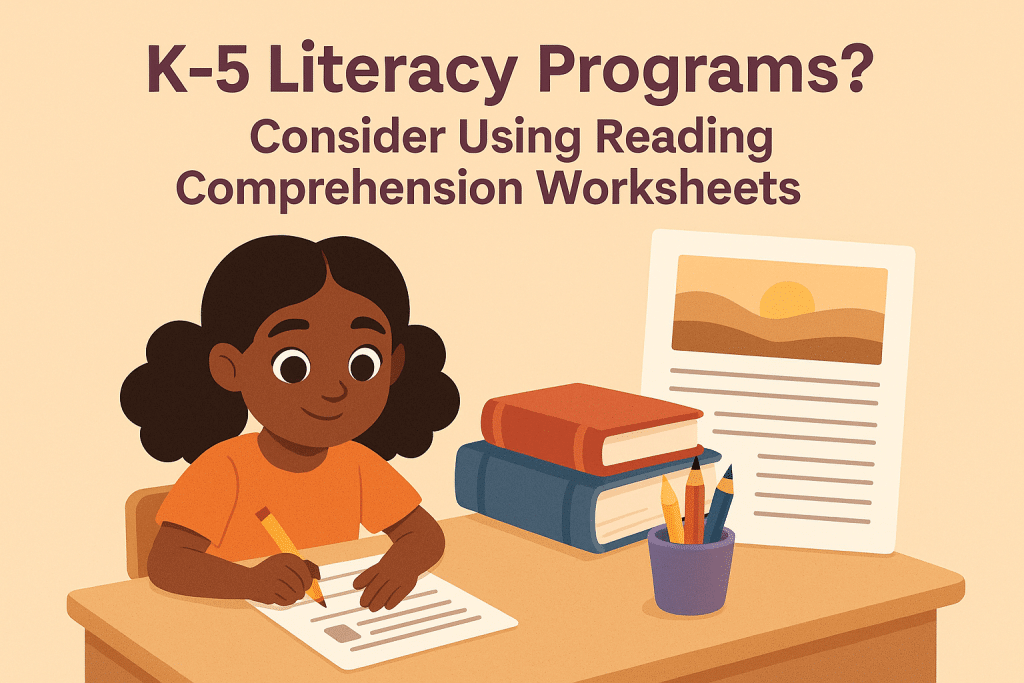Literacy programs for kindergarteners and elementary students need to focus on building and strengthening reading skills. The ability to read fluently is a lifelong asset that benefits children throughout their personal and professional lives. That’s why modern educational institutions are placing strong emphasis on this critical aspect of early learning. After all, reading helps individuals express themselves clearly and confidently. It also shapes their communication skills and supports social development. Still, many parents and teachers don’t know how to help children develop reading fluency. Whether you’re a parent, a teacher, or both, it’s important to recognize that reading comprehension worksheets are the most effective tools available today.
These worksheets, as part of K5 learning programs, can play a critical role in building vocabulary, reading fluency, and critical thinking skills. These materials include phonics, sight words, fiction and nonfiction stories, and comprehension questions. They are tailor-made for individual students and can be used at home or at school. Some also include multiple-choice questions. In fact, certain worksheets encourage children to write essays. All these exercises bolster their reading and writing competencies. To be precise, you can rely on reading comprehension workbooks to support your children’s reading development for several reasons.
- Rich vocabulary
These exercise books are known for enriching vocabulary. When children are introduced to these books, they learn new words, review familiar ones, and try to decipher the meanings of unfamiliar words through context clues. Pictures and illustrations often serve this purpose well. However, you must select books that don’t overuse visual clues, as these can impede a learner’s comprehension growth. Children may start relying too much on them to understand meaning.
- Fiction and nonfiction stories
Many workbooks also cleverly blend fictional and nonfictional story elements to help learners understand distinct themes and plots. In this endeavor, they often include lively settings and characters that engage young minds. With these books, you can guide students in understanding the type of information they contain. You can also provide examples of the story elements that move the plot forward. These methods help ensure that children eventually become successful readers.
- Appropriate use of texts
Many online platforms offer worksheets for students from kindergarten through grade 5. You should choose them based on your child’s age and reading level; otherwise, the material may not capture their interest. On the other hand, a workbook with age-appropriate vocabulary and simple sentences can effectively boost their reading and comprehension skills. To make the learning experience more engaging, consider selecting worksheets with a variety of themes. For example, students in kindergarten through grade 2 may be inspired by bright, creative themes. You can introduce them to worksheets featuring superhero stories told in humorous, action-packed language. These should be full of energy and excitement.
- Tests
Since these books also feature clear, concise questions, it becomes easier to assess a child’s understanding of the reading material. The questions may be either literal or inferential, helping promote critical thinking. At the same time, they are often designed to encourage children to use their imagination.
Hence, it makes sense to incorporate reading comprehension worksheets into your teaching routine at home or at school. These help set a positive learning environment.
